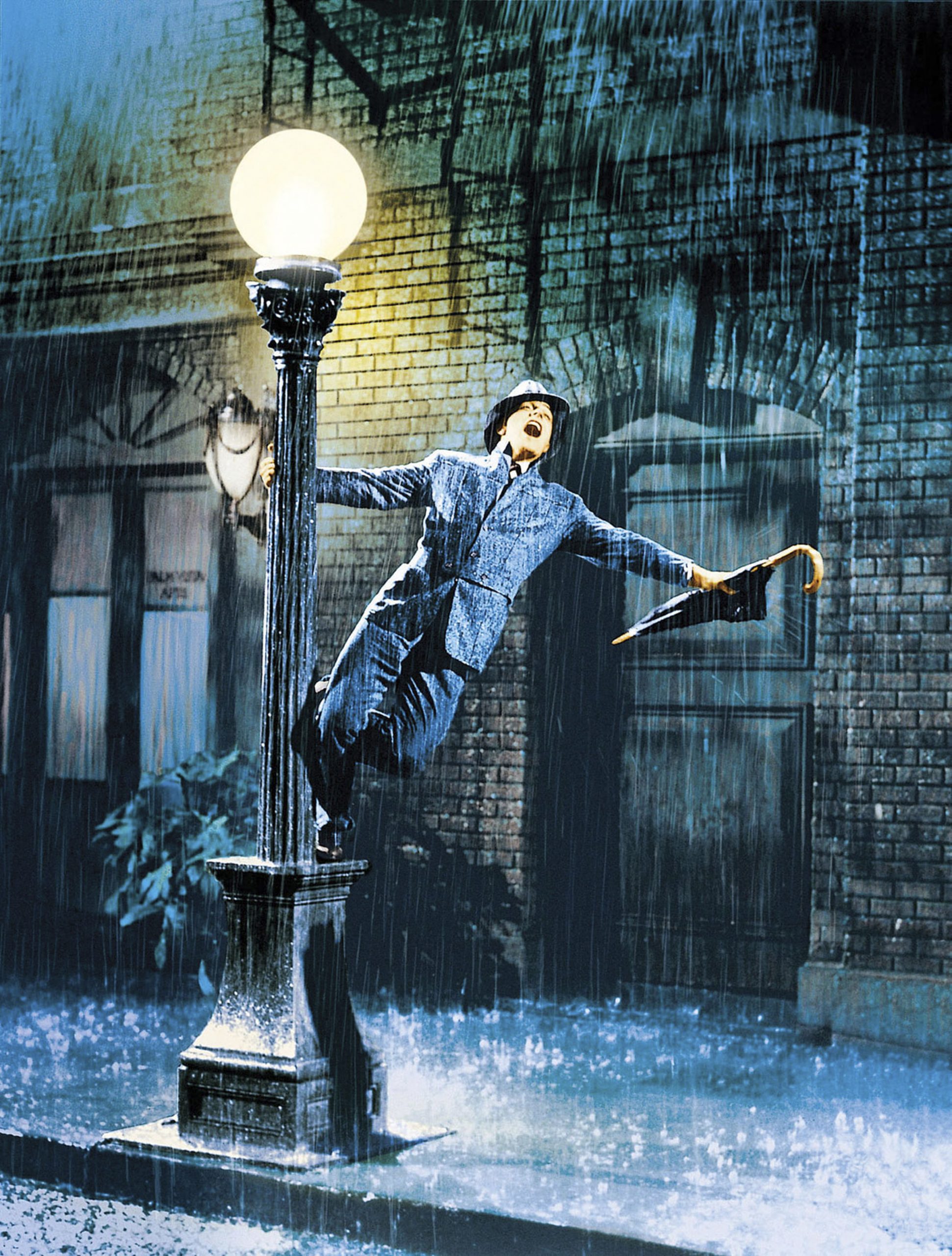Greatest Hollywood Musical
Is there anyone into classic films who doesn’t like Singin’ in the Rain (1952)? Given that 19-year-old Debbie Reynolds had never danced before, and the script had to be written around a group of songs with little in common, it’s a wonder (and a tribute to those involved) that this would turn out to be the greatest Hollywood musical.
Reynolds received six months of intensive dance training before the production began. She had already shown her singing ability and plucky appeal in her previous films (most notably in Two Weeks with Love, where she sang “Abba Dabba Honeymoon” with Carleton Carpenter).
Famed creative team Betty Comden and Adolph Green were given the near impossible task of crafting a storyline around a diverse selection of tunes from the 1920s and 1930s. Two songs, “Fit as a Fiddle” and “Moses Supposes,” were new to this production. “Make ‘Em Laugh” was adapted from Cole Porter’s “Be a Clown,” which Gene Kelly performed in The Pirate (1948). The others were part of a catalogue of songs, acquired by MGM, that had been written by Arthur Freed and Nacio Herb Brown.
Singin’ in the Rain is filled with references to other films. The story centers around the period from 1927 through 1929 when the industry transitioned from silent films to “talkies.” There are allusions to particular films from that period. For example, the fictional film the characters are producing (titled The Dueling Cavalier) is based on an actual film, titled The Cavalier (1928). Like its fictional counterpart, it began as a silent film but was hastily transformed into a sound film, largely through the addition of poorly dubbed musical numbers. And in the Hollywood premiere sequence, the character Zelda Zanders, known as the “Zip Girl,” is meant to evoke the real-life Clara Bow, known as the “It Girl.”
Just as they borrowed songs and plot devices from earlier movies, co-directors Stanley Donen and Gene Kelly scavenged the back lot for suitable props from previous MGM movies. Debbie Reynolds’ car is Andy’s old jalopy from the Andy Hardy series. And the mansion where Gene Kelly lives is decorated with furniture and fixtures from Flesh and the Devil (1926).
The movie references extend to the musical numbers and film-within-a-film scenes. The “Gotta Dance” number echoes previous MGM musicals, including Words and Music (1948), The Pirate, Summer Stock (1950), and An American in Paris (1951). Gene Kelly’s musketeer movie at the beginning of the story recalls his earlier film, The Three Musketeers. And when Kelly brings Reynolds onto an empty sound stage and turns on the lights, it mimics his earlier film, Summer Stock.
While the movie references are fun for film buffs, the real joy comes from the memorable songs, exuberant dance numbers, and snappy dialogue. If you haven’t seen it, you’ll be amazed to find how good a movie musical can be. Even if you don’t like movie musicals, you’ll probably like this one. Nothing else comes close.
Singin’ in the Rain
(1952; directed by Stanley Donen and Gene Kelly)
Warner Home Video (Blu-ray and DVD)
Saturday, February 1 at 10:30 p.m. eastern on Turner Classic Movies
Reviews